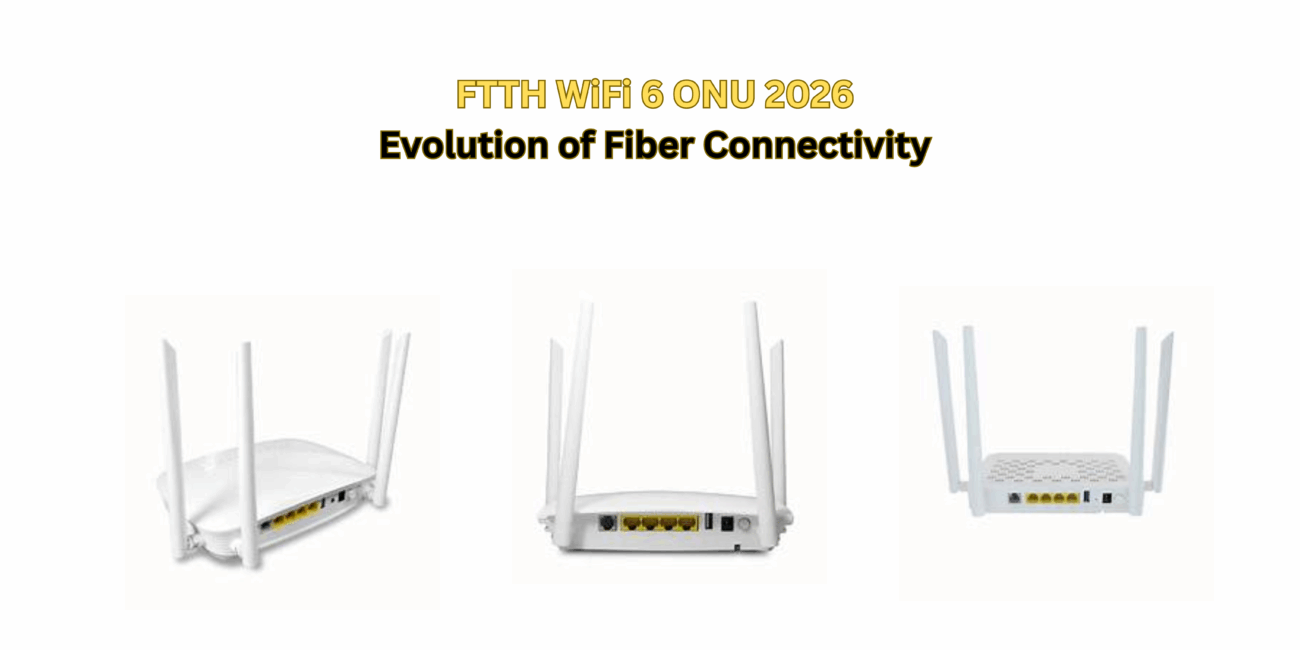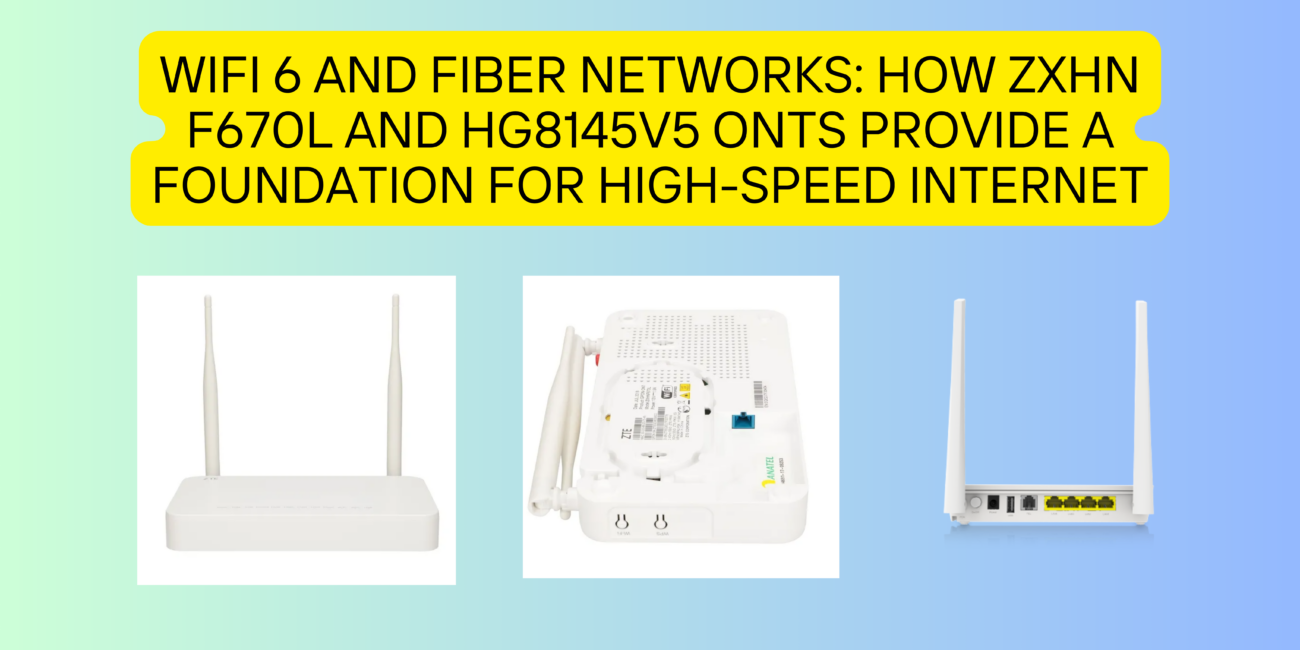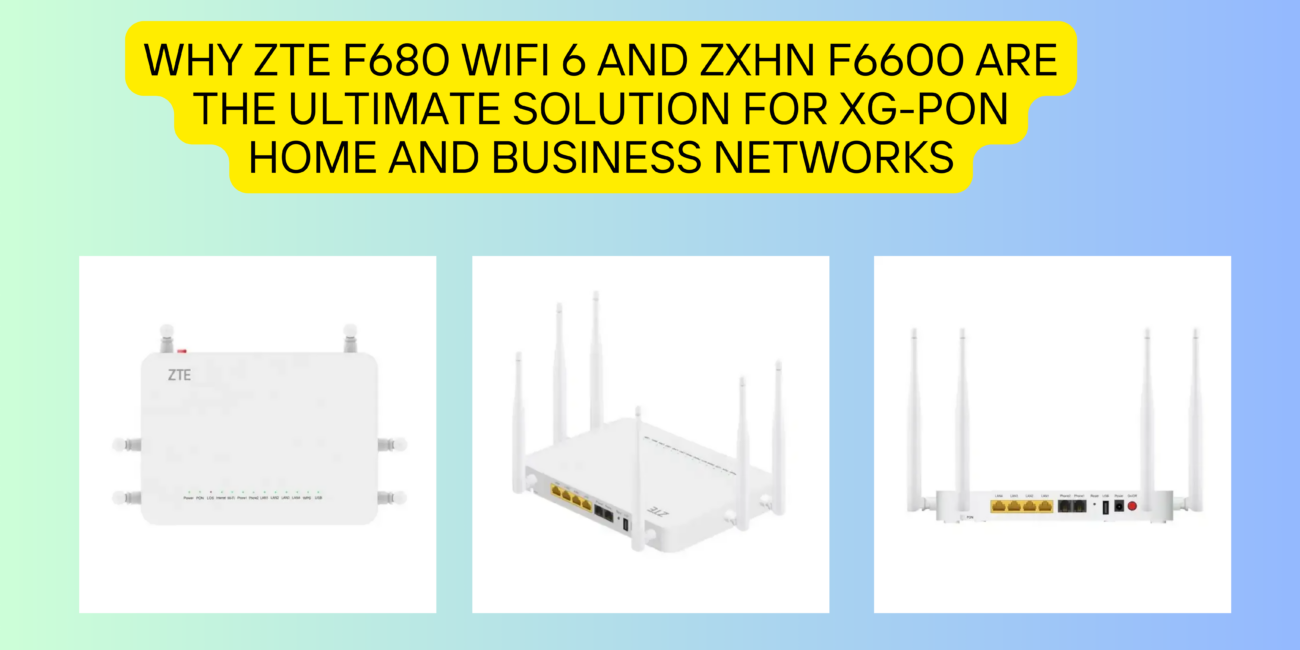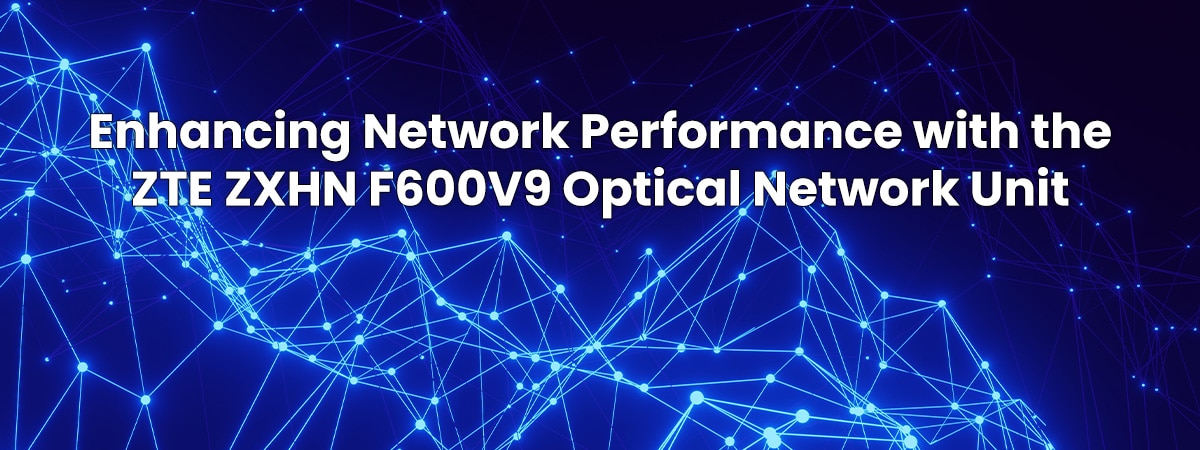As internet demands grow, ONU advancements have transformed connectivity, making networks faster, more reliable, and capable of handling greater traffic. Technologies like Wi-Fi 6, Wi-Fi 6E, and Wi-Fi 7 are reshaping broadband experiences, providing enhanced efficiency for home and enterprise networks. Understanding these advancements helps users and businesses make informed decisions about network upgrades and future-proofing their connectivity.
Understanding ONU and Its Role in Broadband Networks
Optical Network Units (ONUs) play a crucial role in fiber-to-the-home (FTTH) infrastructure. Acting as a bridge between service providers and end-users, ONUs convert optical signals into electrical signals for seamless internet access. The integration of Wi-Fi 6, Wi-Fi 6E, and Wi-Fi 7 into ONUs enhances wireless performance, ensuring lower latency, higher throughput, and improved network efficiency.
Wi-Fi 6 ONU : The Foundation of Modern Connectivity
Wi-Fi 6, also known as IEEE 802.11ax, marked a significant leap in wireless technology. Designed to improve network efficiency, particularly in high-density environments, Wi-Fi 6 introduced features like:
- Orthogonal Frequency Division Multiple Access (OFDMA): This allows multiple devices to share channels, reducing congestion and improving efficiency.
- Target Wake Time (TWT): Optimizes device wake-up times, extending battery life for IoT and mobile devices.
- 1024-QAM (Quadrature Amplitude Modulation): Enhances data rates by 25% compared to Wi-Fi 5.
- MU-MIMO (Multi-User, Multiple Input, Multiple Output): Expands from four to eight spatial streams, improving multi-device performance.
By integrating Wi-Fi 6 into ONUs, network providers can offer better throughput and more stable connections, making it ideal for smart homes, remote work, and high-definition streaming.
Wi-Fi 6E: Expanding the Spectrum for Greater Performance
Wi-Fi 6E builds on Wi-Fi 6 by introducing support for the 6 GHz frequency band, significantly reducing interference and congestion. Key benefits include:
- Increased Bandwidth: With up to seven additional 160 MHz channels, Wi-Fi 6E allows for more simultaneous high-speed connections.
- Lower Latency: The dedicated 6 GHz spectrum reduces network contention, making it perfect for real-time applications like gaming and video conferencing.
- Enhanced Security: WPA3 encryption becomes a standard, improving overall network protection.
By implementing Wi-Fi 6E in ONUs, ISPs can deliver ultra-fast internet speeds with minimal congestion, particularly in urban areas where spectrum overcrowding is a challenge.
Wi-Fi 7: The Future of High-Speed Wireless ONU
Wi-Fi 7 (IEEE 802.11be), set to redefine wireless networking, brings groundbreaking improvements over Wi-Fi 6 and Wi-Fi 6E. Expected to debut in 2024-2025, Wi-Fi 7 introduces:
- 320 MHz Channel Width: Doubles the bandwidth compared to Wi-Fi 6E, enabling multi-gigabit speeds.
- 4K QAM: Increases data density by 20% over 1024-QAM, further boosting transmission rates.
- Multi-Link Operation (MLO): Allows devices to connect across multiple frequency bands simultaneously, improving reliability and reducing latency.
- Enhanced OFDMA and MU-MIMO: Expands multi-device efficiency, making networks more adaptable to heavy traffic.
ONU integration with Wi-Fi 7 will unlock new possibilities for industries requiring ultra-fast, low-latency connectivity, such as virtual reality, AI-driven automation, and advanced cloud computing.
Comparison: Wi-Fi 6 vs. Wi-Fi 6E vs. Wi-Fi 7
| Feature | Wi-Fi 6 | Wi-Fi 6E | Wi-Fi 7 |
| Frequency Bands | 2.4 GHz, 5 GHz | 2.4 GHz, 5 GHz, 6 GHz | 2.4 GHz, 5 GHz, 6 GHz |
| Max Channel Width | 160 MHz | 160 MHz | 320 MHz |
| Modulation | 1024-QAM | 1024-QAM | 4K-QAM |
| Multi-Link Operation | No | No | Yes |
| Max Speed Increase | ~40% over Wi-Fi 5 | ~40% over Wi-Fi 5 | 2-4x Wi-Fi 6 |
| Best Use Case | High-density areas | Reduced interference | Ultra-low latency applications |
Why ONU Integration with Wi-Fi 6, Wi-Fi 6E, and Wi-Fi 7 Matters
ONU integration with these Wi-Fi advancements enhances fiber broadband efficiency, offering:
- Seamless multi-device connectivity: Essential for smart homes and IoT applications.
- Improved security and encryption: Safeguarding user data.
- Higher capacity and speed: Supporting ultra-HD streaming, gaming, and enterprise solutions.
- Reduced congestion: Ensuring smooth performance in high-density areas.
Future Outlook: What Comes After Wi-Fi 7?
While Wi-Fi 7 is still in its early stages, future advancements could include Wi-Fi 8, which may leverage AI-driven network optimization, terahertz (THz) frequency bands, and even more efficient spectrum utilization. As ONUs continue evolving, we can expect greater reliability and smarter connectivity solutions to emerge.
Conclusion
The evolution of Wi-Fi 6, Wi-Fi 6E, and Wi-Fi 7 within ONUs represents a significant shift in broadband capabilities. By adopting these technologies, users and service providers can experience faster speeds, reduced latency, and improved connectivity, ensuring they remain ahead in the digital era. Investing in ONUs with the latest Wi-Fi 6, Wi-Fi 6E, and Wi-Fi 7 capabilities is crucial for future-proofing networks and maximizing the benefits of next-generation broadband solutions.












